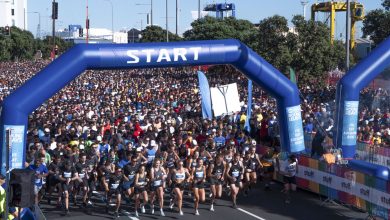
The future of jumps racing in New Zealand hangs in the balance as the sport faces some significant challenges.
With fewer participants, an archaic infrastructure and waning interest from the betting community, New Zealand Thoroughbred Racing (NZTR) has outlined two potential options for the sport.
One option is to invest more resources into reviving jumps racing, while the other is to phase it out gradually through a managed wind-down.
Whichever decision they make will have broad implications, not only for the sport but also for those who enjoy placing bets on horse racing in the southern hemisphere.
New Zealand’s predicament mirrors neighbouring Australia, where jumps racing has largely disappeared aside from 19 meetings staged annually in Victoria.
While Aussie punters still wager on the sport, their focus when utilising Saturday horse racing tips tends to be on the plethora of flat racing meetings staged around the country.
Jump racing’s ability to generate meaningful wagering turnover in Australia has waned, and the same story is being replicated across the Tasman Sea.
With that in mind, we explore four key areas contributing to the uncertainty surrounding the future of jumps racing in New Zealand.

Infrastructure Challenges
One of the primary concerns surrounding jumps racing in New Zealand is the state of the infrastructure that supports it.
Flat racing venues receive regular investment and upgrades, but the same attention has not been given to jumps racing tracks, putting the sport at a disadvantage.
An audit of the ten venues that host jumps racing across New Zealand revealed that most facilities are in average condition at best. Riccarton Park in Christchurch is the only track that is up to national standards.
The lack of investment in jumps racing tracks is a crippling issue. The sport simply isn’t generating enough money to justify any meaningful improvements. Flat racing brings in much more revenue through betting and has a larger fan base, so it receives most of the funding.
Even though there have been recent efforts to improve jumps racing infrastructure, like the rebuilding of the Te Aroha track and a $3 million contribution from Auckland Thoroughbred Racing (ATR), it has not been enough to arrest the slump.
The situation mirrors the state of jumps racing in the United States, where the sport occupies an even smaller place in the global thoroughbred industry.
Jumps racing has deep historical roots in the US, but its popularity has faded in recent years. Major events such as the Carolina Cup and the Maryland Hunt Cup still draw large crowds, but they don’t generate meaningful betting revenue.
Decline in Participation
The most troubling indicator of the state of jumps racing in New Zealand is the steady decline in participation.
New Zealand had 146 trainers and 44 jockeys actively participating in jumps racing in 2010. Fast forward to 2023, and the numbers had nearly halved, with only 54 trainers and 22 jockeys remaining.
This drop in participation is also reflected in the number of races held. New Zealand hosted 122 jumps races in 2010. That figure has now halved.
There are several reasons contributing to the decline of jumps racing, but a key factor is the growing popularity of flat racing, which offers better financial rewards.
Flat racing attracts more sponsors, more spectators and higher betting turnover. Jumps racing is increasingly seen as a more specialised part of the racing industry, appealing to a niche audience.
NZTR tried to change things by increasing the total prize money for jumps races to $2.83 million in 2021. They scrapped nomination and acceptance fees for high-profile races, but it still wasn’t enough to make jumps races more appealing.

Wagering Statistics
Another factor undermining the future of jumps racing is the declining interest from the betting community.
Betting is a key source of income but jumps racing has been unable to keep up with its flat counterpart when it comes to attracting bettors.
The average turnover for a flat race in New Zealand was $162,000 in the 2022/2023 season. By contrast, jumps races averaged just $91,000.
Even in races held earlier in the day at smaller and larger events, betting on flat races was still 50 percent higher than on jumps races.
NZTR has partnered with Entain TAB NZ and they are focusing heavily on maximising betting revenue. However, the data shows that jumps racing continues to fall short in this area.
Wagering numbers are vital for determining where to spend money and resources, and jumps racing is not delivering the same financial returns as flat racing or other popular sports.
Decline in Community Participation
Perhaps the most disheartening challenge facing jumps racing is the decline in community participation.
For many years, jumps racing has been a part of New Zealand’s equestrian tradition.
Events such as the Wellington Steeplechase and the Great Northern Hurdles attracted massive interest. However, they have suffered from a sharp decline in participation and attendance.
Unsurprisingly, flat racing is one of the main reasons for the shifting interests of the racing audience. It has gained more appeal and younger fans are drawn to it, leaving jumps racing to settle for crumbs.
Flat racing is also easier to access, and its mainstream appeal has led to larger crowds, which jumps racing struggles to match.
The future of jumps racing in New Zealand may depend on its ability to reconnect with local communities and inspire new interest.
Without an increase in grassroots involvement, both in terms of fans and participants, the sport’s survival is uncertain.
To sustain jumps racing, it is essential for the sport to find ways to appeal to the next generation while keeping its tradition alive.








